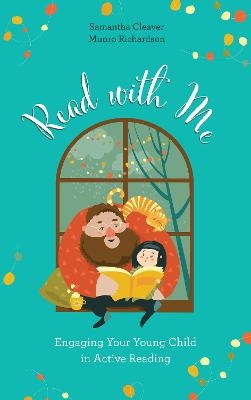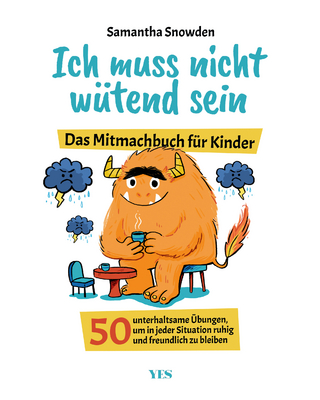
Read with Me
Rowman & Littlefield (Verlag)
978-1-4758-3669-1 (ISBN)
Parents and early childhood teachers know that reading aloud to children is important, but the specific things that adults do while reading with children that make reading a powerful way to improve children’s language, vocabulary, and early literacy skills can remain a mystery. Read with Me makes those behaviors clear and easy to implement for parents and teachers by outlining the ABCs of Active Reading (Ask Questions, Build Vocabulary, and Connect to the Child’s World). Active Reading is an approach to reading aloud with young children that is supported by decades of research. Read With Me provides parents and teachers with the knowledge and skills to engage young children (age 2 to 5) in Active Reading with examples, clear explanations, and ideas for making one-on-one or small group read aloud sessions a powerful way to build children’s early literacy and language skills, all while creating a lifelong love of reading.
Samantha Cleaver led the initial design and startup of Active Reading work for Read Charlotte, a community-wide initiative to double the number of students reading on grade level by 3rd grade in Mecklenburg County, North Carolina. She earned a doctorate in special education with a focus on literacy interventions from the University of North Carolina at Charlotte. Munro Richardson is the executive director of Read Charlotte, a community-wide initiative to double the percent of students reading on grade level by 3rd grade in Mecklenburg County, North Carolina. Richardson earned a doctorate from the University of Illinois at Urbana-Champaign in political science.
Introduction: The Power of Active Reading
Chapter 1: Reading “With” versus Reading “To”
Active Reading: Raising Readers Using Decades of Research
The ABCs of Active Reading
When to do Active Reading: Taking Advantage of Child Development
Learning to Love Books
Chapter 2: Learning to Read: Joint Attention, Print Concepts, and Print Knowledge
Learning to Read vs. Reading to Learn
How Children Learn to Read
Learning to Read: The Early Years
Sharing a Story: Joint Attention
Teaching the Basics of Books
Learning to Read
Chapter 3: How to Read a Book: Repeated Reading, Fill-in-the-Blank, Picture Walks, and Talk More
Early Language and Active Reading
How Children Develop Language
Repeated Reading
Picture Walks
Fill-in-the-Blank Prompts
Talk More
Reading Together
Chapter 4: How to Talk about a Book: Asking Questions
Ask Questions
Setting the Foundation for Reading Comprehension: How Children Learn to Understand what they Read
Asking and Answering Questions: The Foundation for Reading Comprehension
Talk about a Book
Chapter 5: Building Vocabulary: How to Teach Words in Books
Building Vocabulary: A Powerful Tool
Finding Rare Words in Books
Building Vocabulary from Books: Repeated Reading and Conversation
Building Vocabulary through Active Reading
Building Vocabulary after Reading: Talking Beyond Books
Building Vocabulary as Children Grow
Chapter 6: Make Books Bigger: Connect to the Child’s World
Make Connections to Build Meaning
Connect to Experiences
Connect to Stories
Build Background Knowledge
Connect to your Child’s World
Chapter 7: How to Talk about Sounds: Building Phonemic Awareness and Letter Knowledge through Active Reading
What is Phonemic Awareness?
Active Reading to Build Phonemic Awareness
Teaching Letters through Active Reading
How do Kids Learn to Read Words?
From Singing to Reading
Chapter 8: The Active Reading Bookshelf: Building a Library for Active Reading
Access to Books
How to Build an Active Reading Library
Active Reading and Informational Text
The Active Reading Bookshelf
Chapter 9: Time to Read: Doing Active Reading
One book at a Time: Answering Questions about Active Reading
Is e-Reading Active Reading?
Raising Kids who Love to Read
Read with Me
Appendix A: Books for Active Reading
Great for Pointing and Labeling
Great for Letting your Child take over Story Telling
Great for Asking Questions
Great for Building Vocabulary
Great for Connecting to Everyday Experiences
Great Fiction Picture Books for Building Background Knowledge
Great Nonfiction Picture Books for Building Background Knowledge
Great for Picture Walks
Great for Fill-in-the-Blank
Great for Rhyming and Alliteration
Great for Learning Letters and ABCs
Wordless Picture Books
Diverse Books for Active Reading
Appendix B: Active Reading Guides
Llama Llama Red Pajama
Maisy Goes to Preschool
Noisy Nora
The Gruffalo’s Child
A Seed is Sleepy
Owl Babies
Where the Wild Things Are
Rosie’s Hat
Bunny Money
Rumble in the Jungle
Beekle: The Unimaginary Friend
Little Blue Truck Leads the Way
10 Minutes til Bedtime
Appendix C: Building a Coordinated System of Active Reading in Your Community
Glossary
| Erscheinungsdatum | 06.02.2019 |
|---|---|
| Verlagsort | Lanham, MD |
| Sprache | englisch |
| Maße | 159 x 238 mm |
| Gewicht | 476 g |
| Themenwelt | Sachbuch/Ratgeber ► Gesundheit / Leben / Psychologie ► Familie / Erziehung |
| Sozialwissenschaften ► Pädagogik ► Bildungstheorie | |
| Sozialwissenschaften ► Pädagogik ► Vorschulpädagogik | |
| ISBN-10 | 1-4758-3669-4 / 1475836694 |
| ISBN-13 | 978-1-4758-3669-1 / 9781475836691 |
| Zustand | Neuware |
| Haben Sie eine Frage zum Produkt? |
aus dem Bereich


